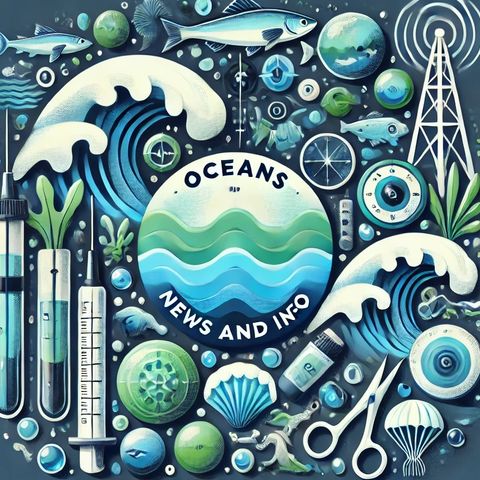Combating Harmful Algal Blooms: The USGS Leads the Charge in Protecting Water Resources

Sign up for free
Listen to this episode and many more. Enjoy the best podcasts on Spreaker!
Download and listen anywhere
Download your favorite episodes and enjoy them, wherever you are! Sign up or log in now to access offline listening.
Description
Algal blooms are a natural phenomenon that occurs when algae in water bodies multiply rapidly, causing a visible discoloration. Not all algal blooms are harmful, but certain types can pose...
show moreThe U.S. Geological Survey (USGS) is at the forefront of tackling this complex issue. Across the nation, USGS scientists are dedicated to understanding the factors that contribute to the development of HABs, predicting their occurrences, and implementing measures to mitigate their harmful effects. This interdisciplinary effort combines state-of-the-art technology, field research, and collaborative partnerships to safeguard public health and protect wildlife.
One of the primary objectives for USGS scientists is to identify the conditions that lead to the formation of HABs. Factors such as nutrient pollution, temperature fluctuations, and water flow dynamics are closely studied. By understanding these variables, scientists can develop predictive models that forecast the likelihood of HAB events. These models are invaluable tools for resource managers and public health officials, enabling them to issue timely warnings and take preventive actions.
In addition to predictive modeling, USGS researchers are engaged in continuous monitoring of water bodies prone to HABs. Advanced sensing technologies, such as remote sensing satellites and autonomous water sensors, allow for real-time data collection and analysis. This comprehensive monitoring system helps in early detection of HABs, providing critical information to mitigate their impact before they reach dangerous levels.
Beyond monitoring and prediction, the USGS is also exploring innovative strategies to prevent HABs from occurring. One approach involves the reduction of nutrient inputs, particularly nitrogen and phosphorus, which are primary fuel sources for algal growth. Efforts to manage agricultural runoff, urban stormwater, and wastewater discharges are pivotal in controlling nutrient levels in aquatic systems. Additionally, researchers are investigating the potential of biological controls, such as introducing specific microorganisms that can outcompete harmful algae, thereby reducing bloom occurrences.
Public awareness and education form another crucial component of the USGS's strategy. Informing communities about the causes and risks associated with HABs empowers them to take preventive measures. Simple actions, such as reducing fertilizer use and properly disposing of pet waste, can significantly diminish nutrient pollution. Educational outreach programs, workshops, and online resources help spread this knowledge, fostering a collective effort to combat HABs.
The collaborative nature of the USGS’s work cannot be overstated. Partnerships with federal, state, and local agencies, as well as academic institutions and nonprofit organizations, enhance the scope and impact of research initiatives. Joint projects enable the sharing of expertise, resources, and data, fostering a holistic approach to addressing the challenges posed by harmful algal blooms.
The work of USGS scientists is vital in mitigating the risks associated with HABs and safeguarding our water resources. By advancing our understanding, improving predictive capabilities, and implementing effective prevention strategies, they are making significant strides in protecting both human health and the environment from the threats posed by harmful algal blooms.
Information
| Author | QP-4 |
| Organization | William Corbin |
| Website | - |
| Tags |
Copyright 2024 - Spreaker Inc. an iHeartMedia Company
